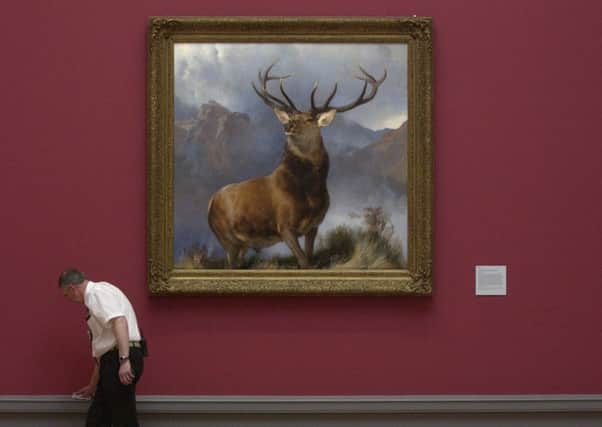Leader comment: Masterpiece or not, the Monarch of the Glen is a national treasure


The iconic image is one of the most recognisable images of Scotland ever created on canvas. With internationally acclaimed collections of artwork on display in our galleries, how could we let this hugely popular work slip from our hands?
But although the image feels like it belongs to us, it has been in private ownership ever since the House of Commons reneged on the fee for its commission in 1850. Its ubiquity has added to the false sense of common ownership, with the stag – or a variation – having been used to advertise Pears soap, Baxters soup and Glenfiddich whisky. Its current owner is the drinks company Diageo, which has loaned the painting to the National Museum of Scotland for the past 17 years.
Advertisement
Hide AdAdvertisement
Hide AdBut just how important is the painting, both in terms of its artistic merit and its Scottish significance?
Purists would have a field day, and some would damn the Monarch of the Glen, like the kilt, as no more than a Victorian invention. Observers reckon the head is of a hill stag, and the body that of the far bulkier park stag, the kind of error that Jack Vettriano would be crucified over. And the hybrid creation represents a Victorian view of Scotland that was reality only for the aristocracy heading north for a bit of sport in the playground of the Highlands. The artist, Sir Edwin Landseer from London, became Queen Victoria’s favourite, and it is easy to see why his romantic imagery would appeal to her.
So if the Monarch of the Glen is flawed, with questionable Scottish provenance, is it worth spending £10 million of public funds to keep it in Scotland? The answer has to be yes.
Whatever issues there may be over its merit and value date back 165 years, and what matters is its impact today. The appeal that the Monarch of the Glen still commands makes it one of the most significant pieces of artwork associated with Scotland.
We rail against the shortbread image of Scotland, preferring to take pride in the rich landscape, while at the same time trying to ignore the fact that our heritage – genuine and kitsch – is a huge draw for tourists.
Whether we are comfortable with it or not, the Monarch of the Glen is a gift as a marketing tool. Even those who would prefer to sell Scotland’s scenery ahead of its sentimentality have to admit that Landseer was doing just that when he set his greatest work against a rugged mountain background.
In the open market, it is possible that a serious bid from the National Galleries of Scotland may not be enough. But it would be a great shame if no attempt is made to keep the painting in Scotland, and further harness its potential as we bid to attract visitors here.
Let’s have no hang-ups about what is and isn’t fine art, and accept the Monarch of the Glen for what it is – an internationally recognised, attractive image of Scotland. Other countries would kill for such an asset.